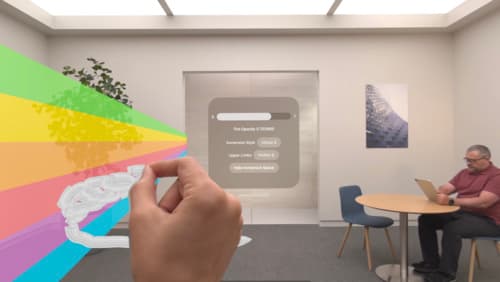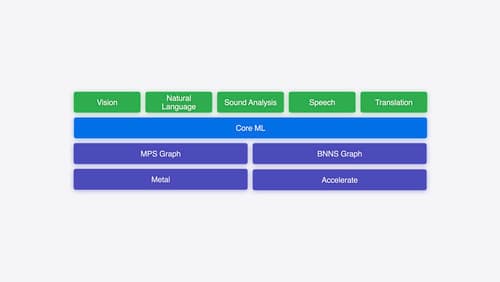I want to learn more about Metal.
Asked on 2024-08-02
1 search
To learn more about Metal, you can explore several sessions from WWDC 2024 that cover different aspects of Metal, including its use in machine learning and game development. Here are some relevant sessions and their chapters:
-
Accelerate machine learning with Metal
- Introduction: Overview of accelerating machine learning models using Metal.
- Transformer support: Improvements to MPS and MPS Graph, focusing on transformer models.
- Fast Fourier transforms: New features to accelerate FFT-based ML models.
- MPS Graph viewer: Introduction to MPS Graph viewer.
-
Train your machine learning and AI models on Apple GPUs
- Introduction: Overview of training ML models on Apple GPUs.
- Training frameworks on Apple silicon: Details on using frameworks like TensorFlow, PyTorch, and JAX with Metal backend.
- PyTorch improvements: Enhancements in PyTorch for better performance with Metal.
- ExecuTorch: Introduction to ExecuTorch.
- JAX features: Features of JAX with Metal backend.
-
Port advanced games to Apple platforms
- Intro: Introduction to porting advanced games to Apple platforms.
- Evaluate your game: Steps to evaluate your game for porting.
- Port your game: Detailed process of porting your game.
- Configuration: Configuration settings for porting.
- Shaders: Information on shader conversion and Metal features.
- Graphics: Advanced graphics and compute features in Metal.
- Input and rumble: Implementing input and rumble features.
- Audio: Handling audio in your game.
- Cloud saves: Implementing cloud saves.
- Debug and profile with Metal tools: Tools for debugging and profiling with Metal.
-
Render Metal with passthrough in visionOS
- Introduction: Overview of using Metal in visionOS.
- Mix rendered content with surroundings: Techniques for mixing rendered content with real-world surroundings.
- Position render content: Positioning rendered content in visionOS.
- Trackable anchor prediction: Using trackable anchor prediction in visionOS.
-
Explore machine learning on Apple platforms
- Introduction: Overview of machine learning on Apple platforms.
- Apple Intelligence: Apple's intelligence features.
- ML-powered APIs: APIs powered by machine learning.
- Running models on device: Running ML models on Apple devices.
- Research: Research aspects of machine learning on Apple platforms.
These sessions provide a comprehensive look at how Metal can be used for both machine learning and game development on Apple platforms.

Port advanced games to Apple platforms
Discover how simple it can be to reach players on Apple platforms worldwide. We’ll show you how to evaluate your Windows executable on Apple silicon, start your game port with code samples, convert your shader code to Metal, and bring your game to Mac, iPhone, and iPad. Explore enhanced Metal tools that understand HLSL shaders to validate, debug, and profile your ported shaders on Metal.

Render Metal with passthrough in visionOS
Get ready to extend your Metal experiences for visionOS. Learn best practices for integrating your rendered content with people’s physical environments with passthrough. Find out how to position rendered content to match the physical world, reduce latency with trackable anchor prediction, and more.

Explore machine learning on Apple platforms
Get started with an overview of machine learning frameworks on Apple platforms. Whether you’re implementing your first ML model, or an ML expert, we’ll offer guidance to help you select the right framework for your app’s needs.
